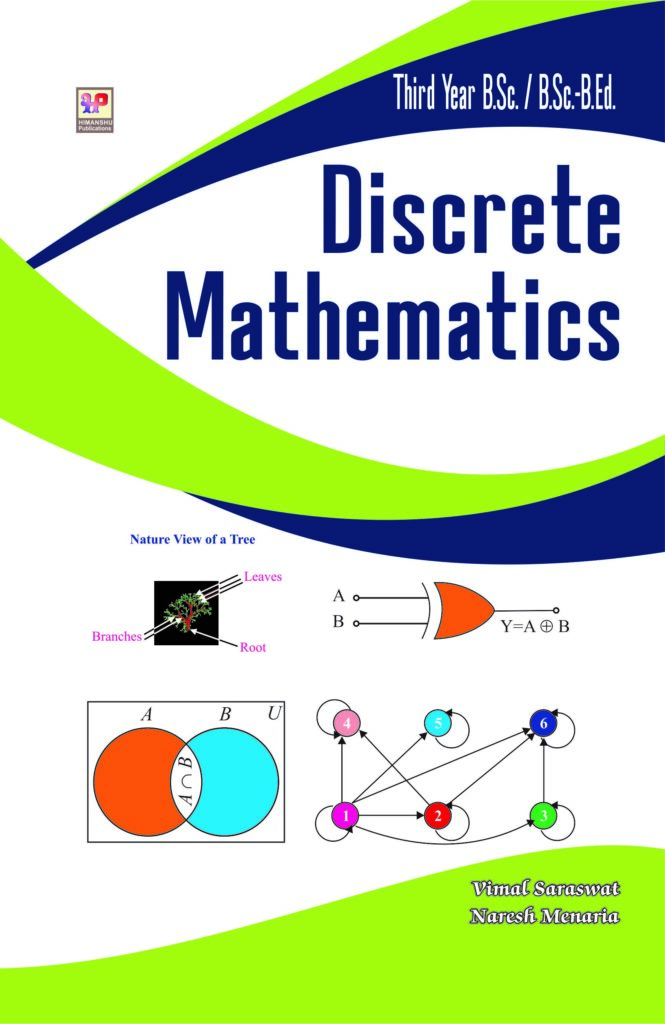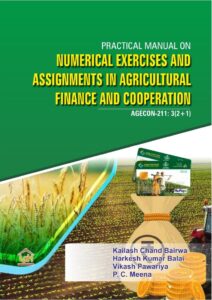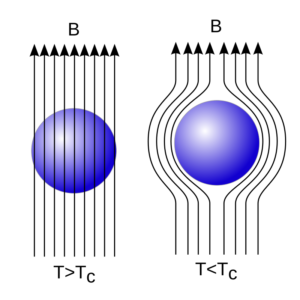Discrete Mathematics

This book includes the following topics
Sets, Mathematical Induction and Inclusion-Exclusion Principle
- Introduction
- Set
- Notation
- Representation of set
- Standard set
- Symbols in set
- Finite and infinite set
- Order of set / cardinality
- Type of sets
- Subsets and proper subsets
- Power set
- Sets of set
- Universal set
- Venn- Euler diagram
- Union of sets
- Intersection of sets
- Disjoint sets
- Difference of sets
- Symmetric difference of two sets
- Complementary set or complement of set
- Algebraic laws of sets
- Cartesian product of two sets
- de-Morgan’s Law
- Deduction and induction
- Principle of mathematical induction
- Principle of inclusion and exclusion
- The generalized inclusion-exclusion principle
Language and Grammar
- Introduction
- Ordered set
- Alphabets
Word
Empty word
String
Sub-words and initial segments
- Set of words
- Language
- Operations on languages
- Regular expression
- Regular language
- Grammar or phase-structured grammar
- Types of grammar
Permutation and Combination
- Introduction
- Factorials
- Permutation
Permutation with repetitions
Circular or cyclic permutation
- Combinations
- Important results of combinations
Relation and Function
- Introduction
- Relation
- Domain and range of a relation
- Inverse relation
- Complement of a relation
- Representation of relation
- Types of relation
- Equivalence class
Properties of equivalence classes
Quotient set
- Partition of set
- Closures and their types
Reflexive closure
Symmetric closure
Transitive closure
- Partial order relation, POR
- Total order relation, TOR
- Partially ordered set
- Total ordered relation
- Dual of the partial order relation
- Hasse diagram
- Lower and upper bounds
Greatest lower bound, glb
Least upper bound, lub
- Lattice
Sublattice
Bounded lattices
Distributive lattices
Complement of an element of lattice
Complemented lattice
Chain
- Functions
- Some standard functions
- Types of functions
One-one function
Onto function or Surjective function
One-one onto or Bijective function
Many-one function
Inverse function
- Composition of function or composite function
- Pigeonhole principle
Generalized pigeonhole principle
Graph Theory
- Introduction
- Graph
- Basic terminology
- Types of graph
Finite and infinite graph
Simple graph
Multi graph
Pseudo graph
Null graph
Drawing of graph
- Some special type of simple graphs
- Regular graph
- Complete graph
- Bipartite graph
- Complete bipartite graph
- Complementary graph
- Cycle
- Wheel
- Subgraph
- Operations on graph
Union of two graphs
Intersection of two graphs
Ring sum of two graphs
Join of two graphs
Product of two graphs
- Isomorphism of graphs
- Connectedness
- Walk
- Important definition related to walk
- Weighted graphs
- Shortest path problem
- Euler or Eulerian graphs
- Euler theorem
- Hamiltonian cycle and path
- Hamiltonian graph
- Travelling salesman problem
- Planar graph
- Region of graph
- Euler formula
- Directed graph or digraphs
Different vertex in a digraph
Types of directed graph
Isomorphism in digraphs
- Digraphs and binary relations
- Matrix representation of graphs
Adjacency matrix
Incidence matrix
Relation between adjacency matrix and incidence matrix
- Adjacency and incidence matrix of digraph
Tree
- Introduction
- Tree
- Elementary theorems and important properties of trees
- Some important definitions
Distance between two vertices
Eccentricity of a vertex
Centre of graph
Radius and diameter of a tree
- Forest
- Rooted tree
- Subtree
- Ordered rooted tree
- Binary tree
- Properties of binary tree
- Height and path length of a binary tree
- Balanced rooted tree
- Labelled tree and binary decision tree
- Spanning tree
- Minimal spanning tree
- Methods of finding minimal spanning tree
Kruskal’s algorithm
Prim’s algorithm
Finite State Machine
- Introduction
- Information processing machine
- Finite state machine
- Representation of finite state machine
- Equivalent machines
- Equivalent states
- Finite state machine as language recognizers
- Finite state language
- Finite state automata)
- Pumping lemma
Recurrence Relation and Recursive Algorithms
- Discrete numeric function
- Operations on numeric functions
- Generating function
- Generating functions of some simple numeric functions
- Generating functions of some specific numeric functions
- Recurrence relation
Linear recurrence relations with constant coefficients
Homogeneous linear recurrence relations with constant coefficients
- Recursive algorithms or solution of a linear recurrence relation
Homogeneous solution
Particular solution
Total solution
- Solution by the method of generating function
Boolean Algebras-Lattice
- Introduction
- Partial order relation, POR
- Total order relation, TOR
- Lower and upper bounds
Greatest lower bound, glb
Least upper bound, lub
- Lattice
- Sublattice
- Boolean algebra
- Duality
- Principle of duality
- Properties of Boolean algebra
- Order relation or inclusion relation in a Boolean algebra
- Boolean expression and their equivalence
- Boolean functions
- Maxterm and Minterm
- Normal form of Boolean functions
Conjunctive normal form or CNF
Disjunctive normal form or DNF
- Complementary function of a Boolean function
- Boole’s expansion theorem
Logic and Propositional Calculus
- Introduction
- Sentence and proposition
- Types of statement
- Logical connectives
- Some special definitions
- Basic logical operations and their truth tables
Conjunction, ∧
Disjunction, ∨
Negation, ~
Tautology
Fallacy or contradiction
Implication or conditional statement
Converse, inverse and contraposition of an implication or conditional statement
Biconditional
Logical equivalence
Exclusive OR, ⊕
- Algebra of propositions
- Algebraic structure
- Logic and bit operations
- Logical connectives NAND and NOR
- Validity of argument
Switching Circuit
- Introduction
- Switch
- Combination of switches: Switch in series and Switch in parallel
- Mixed combination of switches
- Applications of two or more switches
- Circuit with composite operations
- Logic circuit elements
- Basic logic gates
- Universal gate : NAND and NOR gate
- XOR and XNOR gate
Brief Review of Group and Ring
- Introduction
- Cartesian product
- Algebraic structure
- Binary operation
- Group
- Finite and infinite group
- Groupoid or quasi group
- Semi-group
- Monoid
- Commutative or abelian group
- Order of a group
- Modulo operation
- Uniqueness property in group
- Integral power of an element of group
- Order of an element of a group
- Subgroup
- Examples of subgroup
- Coset
- Lagrange’s theorem
- Cyclic group
- Homomorphism
- Types of homomorphism
- Kernel of homomorphism
- Ring
- Examples of ring
- Commutative ring
- Ring with unity
- Ring with zero divisor
- Ring without zero divisor
- Integral domain
- Division ring
- Field
- Boolean ring
- Cancellation laws in ring
- Unit element of a ring
- Characteristic of a ring
- Characteristic of an integral domain and field
- Subring)
- Improper or trivial subring
- Examples of subring
- Necessary and sufficient condition for a subring
- Intersection of two subrings
- Subfield
- Prime field
- Examples of Subfield



